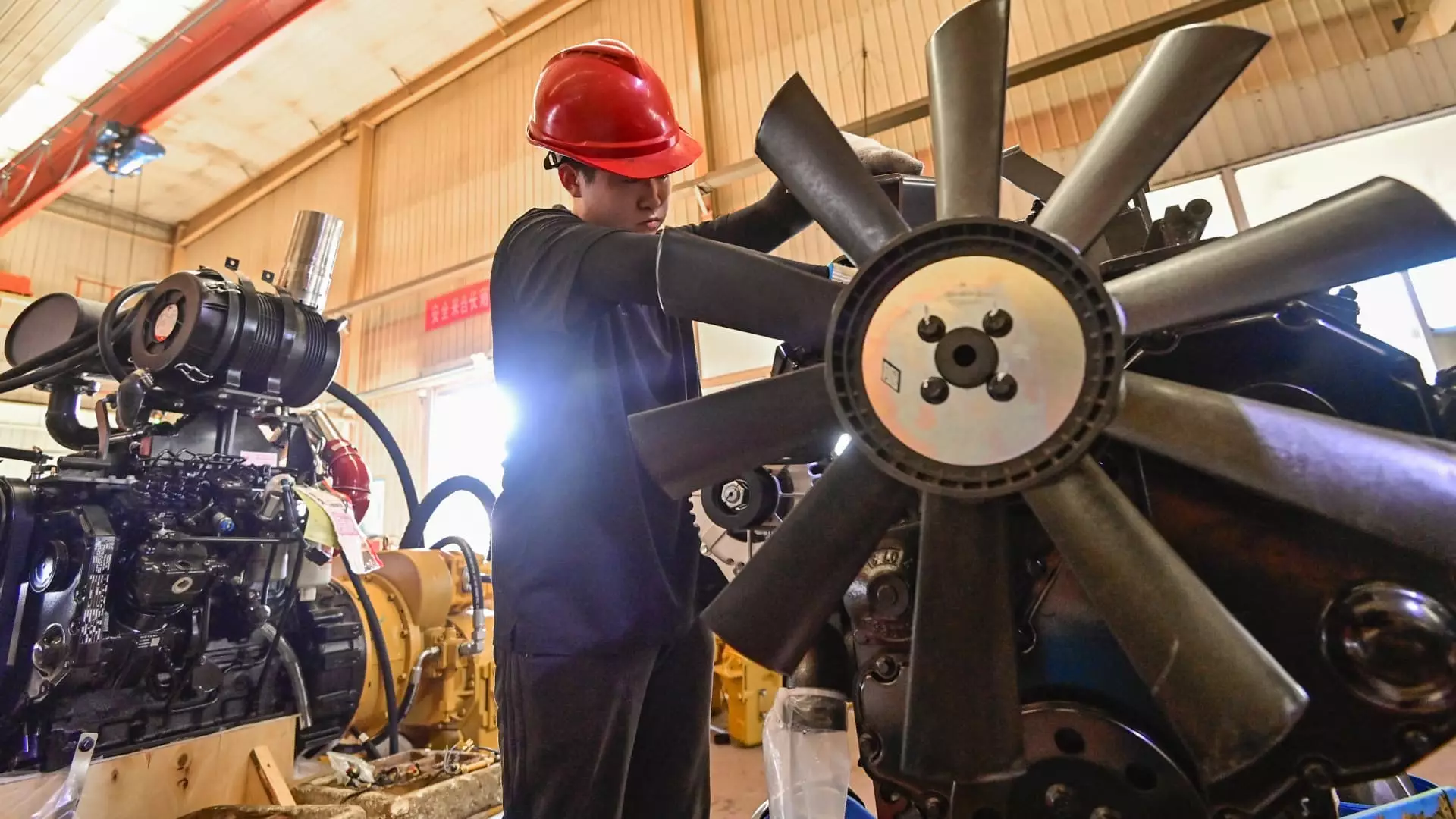Recent reports indicate a notable shift in China’s manufacturing sector, particularly among smaller firms. The latest figures from the Caixin/S&P Global manufacturing purchasing manager’s index (PMI) reveal a slight resurgence in activity, with an October reading of 50.3. This contrasts against the previous month’s reading of 49.3, suggesting a rejuvenation in the manufacturing landscape. A PMI above 50 is significant as it denotes growth; conversely, any figure below that threshold signals contraction. This data has emerged following the release of official PMI results, which also showcased a long-awaited expansion in the manufacturing domain for the first time since April.
The Caixin index, crucial in tracking the performance of smaller and export-oriented manufacturers, diverges from the official PMI figures which predominantly reflect larger state-owned enterprises. This distinction is vital as it underscores how different segments of the manufacturing ecosystem in China respond to economic stimuli and market demands.
Analyzing the factors contributing to this unexpected increase, Wang Zhe, a prominent economist at the Caixin Insight Group, mentioned that both supply and demand experienced growth, signaling a recovery in overall market conditions. The increase in new orders hints at a renewal of confidence among manufacturers, driven by improved underlying demand and innovative business strategies being implemented across the sector. The report notes an acceleration in new orders at the quickest rate in four months, which could suggest that businesses are cautiously optimistic about future demand scenarios.
However, not everything is positive. Despite the uptick in overall order placements, export orders witnessed a decline, albeit at a reduced pace compared to previous months. Additionally, employment levels remain stagnant as manufacturers exhibit caution in expanding their workforce amid lingering uncertainties. The overall sentiment reflects a mixed bag; while there is cautious optimism fueled by new orders and production growth, challenges such as declining export orders and stagnant employment rates pose considerable risks.
In response to muted economic growth, the Chinese government has initiated a series of stimulus measures designed to reinvigorate the economy. Among these measures was a significant cut in the reserve requirement ratio (RRR) by the People’s Bank of China, along with a reduction in the seven-day reverse repurchase rate. These policy decisions aim to increase liquidity within the economy, providing the necessary funds for banks to lend more freely and encourage business expansion.
Andy Maynard from China Renaissance emphasizes the positive implications of these measures, suggesting that they have been responsive to the market’s needs. However, he notes the nascent nature of this recovery, hinting that it is still in its infancy, and the real measure of impact will depend on forthcoming data that reflects the durability of this upward movement. Hence, while these measures may lay the groundwork for recovery, it remains to be seen whether they can yield sustainable improvements in economic conditions.
Despite the glimmers of recovery, there remain significant challenges that could undermine China’s manufacturing resurgence. The rise of domestic competition within the sector reflects a harsher economic reality, where efficiency rates are still trailing historical averages. This indicates that manufacturers are operating under tighter margins and potential oversupply challenges.
Moreover, external factors such as geopolitical tensions, particularly regarding upcoming U.S. elections and the increasing threat of global protectionism, could further complicate the landscape for Chinese exporters. Gary Ng from Natixis articulately captures this sentiment, recognizing that while there are hopeful signs driven by a pro-growth governmental agenda, lingering uncertainties could thwart sustainable recovery efforts.
While the recent manufacturing PMI readings and government stimuli have cultivated a newfound sense of optimism in China’s economy, the road to recovery is fraught with complexities. The diverse responses of various sectors within manufacturing, coupled with external pressures, represent a delicate balancing act that policy-makers and industry stakeholders must navigate. Upcoming announcements from China’s parliamentary committee slated for early November may further elucidate the government’s strategy for fiscal stimulus, which could be pivotal in determining the longevity of this recovery narrative. Moving forward, monitoring these trends will be essential for understanding the trajectory of China’s manufacturing sector in an increasingly volatile global landscape.


Leave a Reply